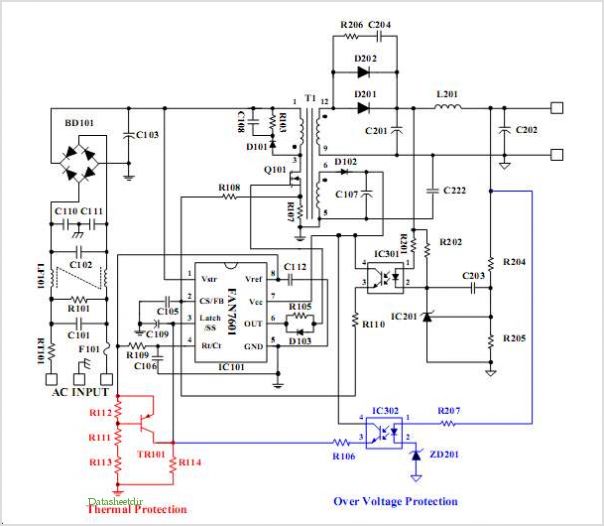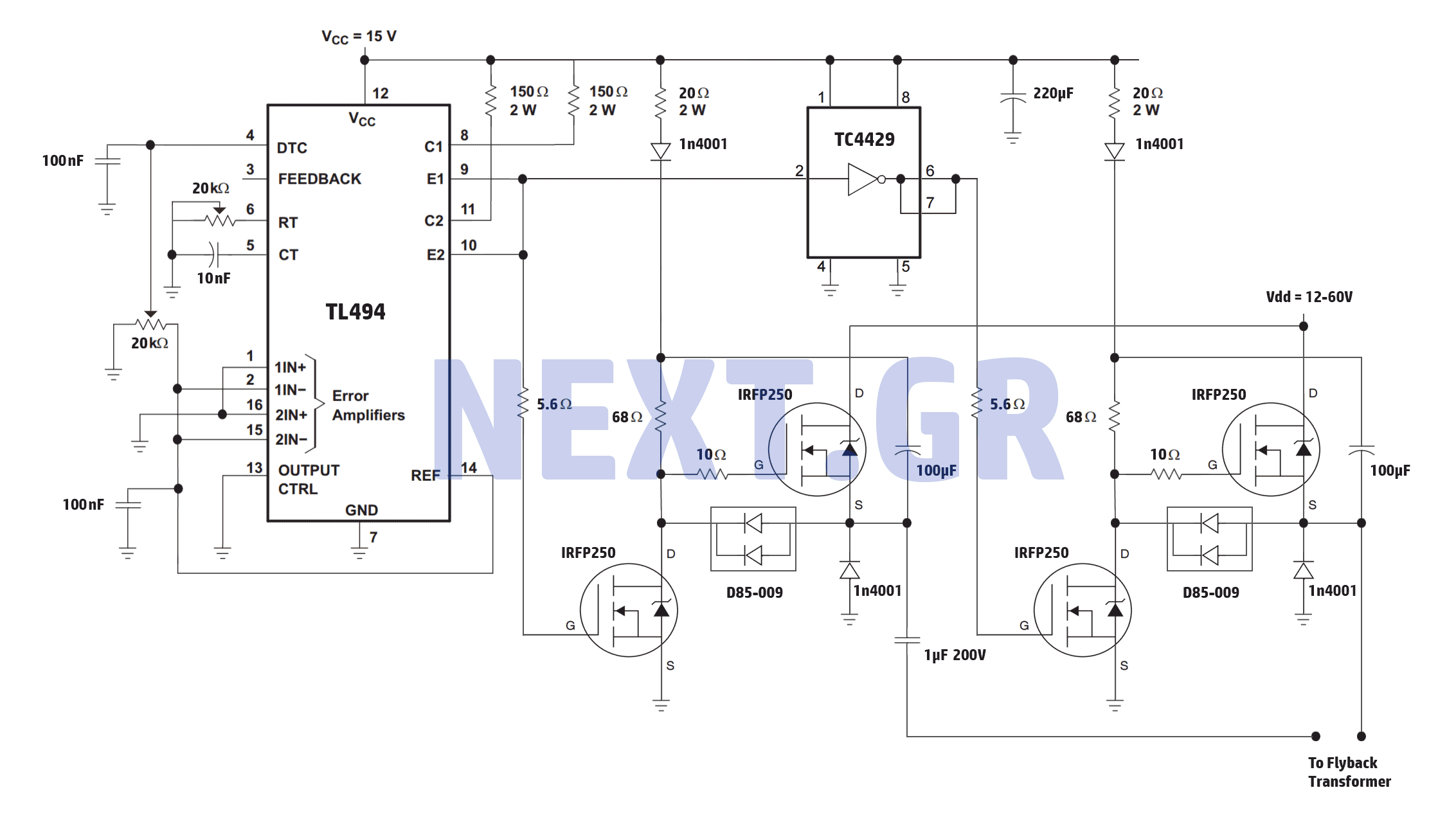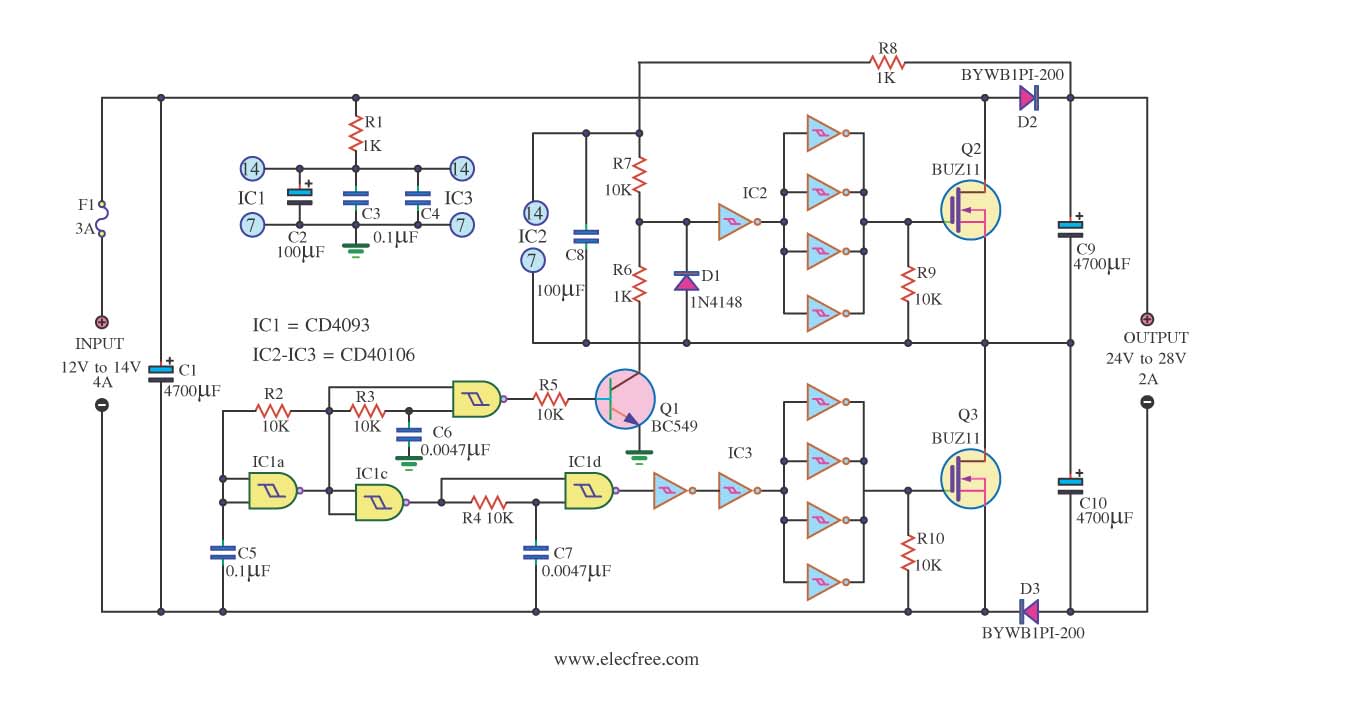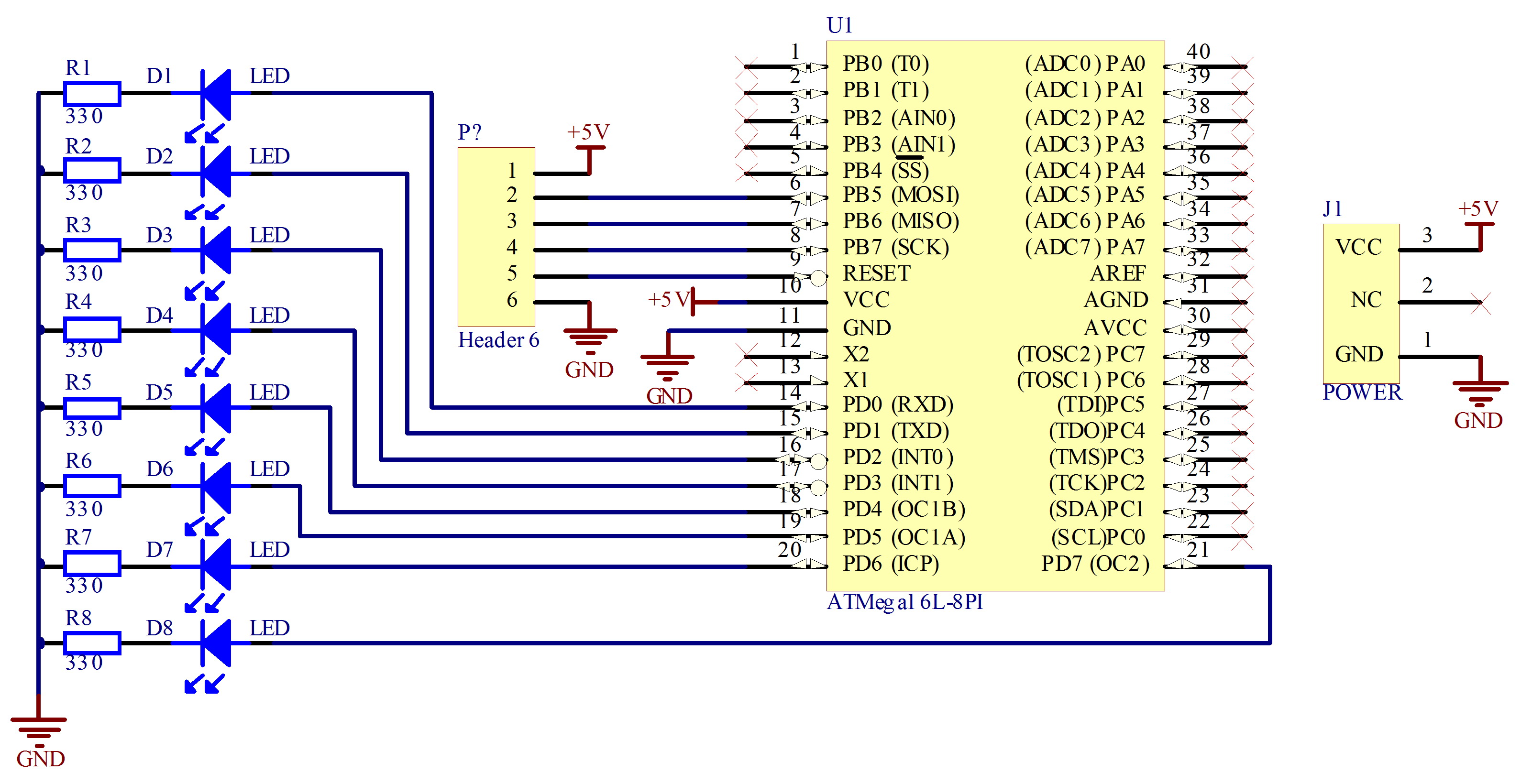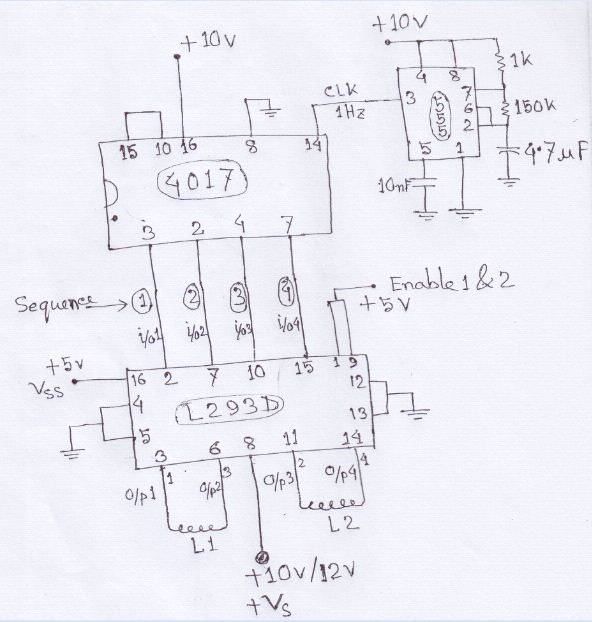
PWM Motor Driver with MOSFET H-Bridge and AVR ATmega8
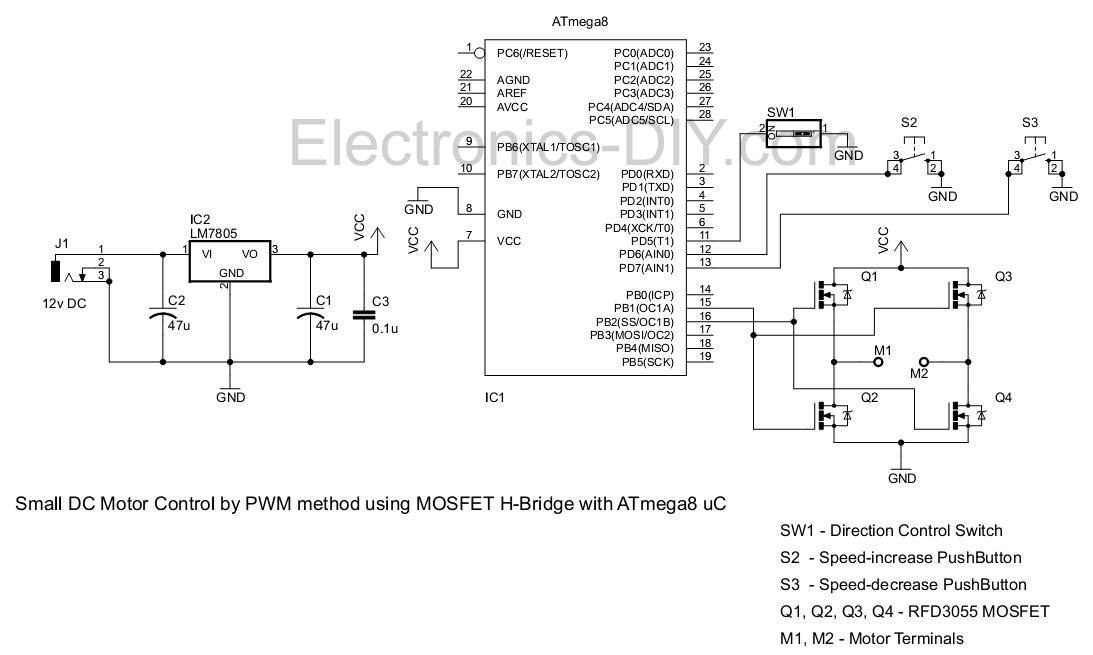
This project involves controlling a small DC motor, sourced from an old personal cassette player, using the ATmega8 microcontroller. The ATmega8 features three PWM channels, of which two are utilized in this application. The PWM signals are sent to a MOSFET H-bridge (RFD3055) to control the motor's operation. A two-position toggle switch is used to manage the motor's direction, while two push-buttons are employed to adjust the speed—one button increases speed, and the other decreases it. When switch SW1 is closed, the OC1A channel is activated, sending the PWM signal to MOSFETs Q1 and Q4, while keeping OC1B low to turn off Q3 and Q2. Opening SW1 deactivates OC1A, turning off Q1 and Q4, and activates OC1B, which sends the PWM signal to Q3 and Q2, reversing the current flow through the motor and changing its rotation direction. Speed adjustments are made by pressing push-buttons S2 and S3, which increment or decrement the speed in fixed steps.
This circuit utilizes the ATmega8 microcontroller, which is a popular choice for various embedded applications due to its versatility and ease of use. The microcontroller's PWM channels allow for precise control of the motor speed and direction, making it suitable for projects requiring fine motor control.
The H-bridge configuration, implemented with the RFD3055 MOSFETs, enables bidirectional control of the motor. By toggling the switch SW1, the circuit can switch between two states: one for forward motion and the other for reverse. The use of push-buttons S2 and S3 to control speed allows for straightforward user interaction, providing a simple interface to adjust the motor's performance.
In the schematic, the connections between the ATmega8 and the MOSFETs are critical for the operation of the motor. The PWM signals generated from the OC1A and OC1B pins are responsible for driving the gates of the MOSFETs, which in turn control the current flow through the motor. The choice of MOSFETs is essential, as they must be capable of handling the motor's current requirements while providing low on-resistance to minimize power loss.
Overall, this project exemplifies a basic yet effective implementation of motor control using a microcontroller, showcasing the integration of hardware components such as switches, buttons, and MOSFETs to achieve the desired functionality. The design can be expanded or modified for more complex applications, including feedback systems for speed regulation or remote control capabilities.Here is a very simple project of controlling a small DC-motor (taken from an old personal cassette player) with ATmega8. The ATmega8 is having three PWM channels, out of which two are used here. PWM waveforms are fed to MOSFET (RFD3055) H-bridge. Here, direction is controlled using a two-position toggle switch and speed of the motor is controlled by two push-buttons, one for increasing the speed and other for reducing.
The schematic is geiven here (click on the image to enlarge): When switch SW1 is closed, OC1A channel is active which will feed the PWM signal to Q1 & Q4 MOSFETs. The OC1B pin will remain low keeping the Q3 & Q2 in OFF condition. When SW1 is toggled to open position, OC1A pin will become low, making Q1 & Q4 OFF and OC1B will feed the PWM signal to Q3 & Q2, resulting in the change in the direction of current flow through motor.
Hence, motor rotation direction will change. The speed is controlled by Push-buttons S2 & S3. Pressing S2 will increase the speed in fixed steps. Similarly, pressing S3 will reduce the speed in fixed steps. 🔗 External reference
This circuit utilizes the ATmega8 microcontroller, which is a popular choice for various embedded applications due to its versatility and ease of use. The microcontroller's PWM channels allow for precise control of the motor speed and direction, making it suitable for projects requiring fine motor control.
The H-bridge configuration, implemented with the RFD3055 MOSFETs, enables bidirectional control of the motor. By toggling the switch SW1, the circuit can switch between two states: one for forward motion and the other for reverse. The use of push-buttons S2 and S3 to control speed allows for straightforward user interaction, providing a simple interface to adjust the motor's performance.
In the schematic, the connections between the ATmega8 and the MOSFETs are critical for the operation of the motor. The PWM signals generated from the OC1A and OC1B pins are responsible for driving the gates of the MOSFETs, which in turn control the current flow through the motor. The choice of MOSFETs is essential, as they must be capable of handling the motor's current requirements while providing low on-resistance to minimize power loss.
Overall, this project exemplifies a basic yet effective implementation of motor control using a microcontroller, showcasing the integration of hardware components such as switches, buttons, and MOSFETs to achieve the desired functionality. The design can be expanded or modified for more complex applications, including feedback systems for speed regulation or remote control capabilities.Here is a very simple project of controlling a small DC-motor (taken from an old personal cassette player) with ATmega8. The ATmega8 is having three PWM channels, out of which two are used here. PWM waveforms are fed to MOSFET (RFD3055) H-bridge. Here, direction is controlled using a two-position toggle switch and speed of the motor is controlled by two push-buttons, one for increasing the speed and other for reducing.
The schematic is geiven here (click on the image to enlarge): When switch SW1 is closed, OC1A channel is active which will feed the PWM signal to Q1 & Q4 MOSFETs. The OC1B pin will remain low keeping the Q3 & Q2 in OFF condition. When SW1 is toggled to open position, OC1A pin will become low, making Q1 & Q4 OFF and OC1B will feed the PWM signal to Q3 & Q2, resulting in the change in the direction of current flow through motor.
Hence, motor rotation direction will change. The speed is controlled by Push-buttons S2 & S3. Pressing S2 will increase the speed in fixed steps. Similarly, pressing S3 will reduce the speed in fixed steps. 🔗 External reference
